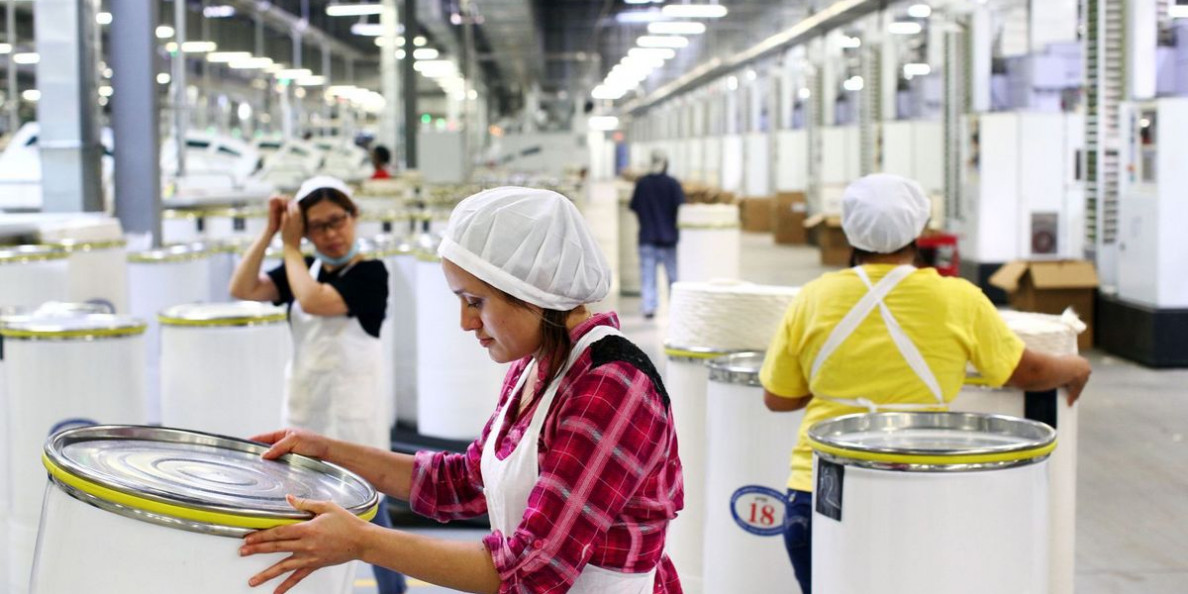What would it take to make the fashion industry truly sustainable?
By Michelle ChenTwitter
The hot trend on today’s catwalk is “sustainable fashion,” with big names like H&M and Stella McCartney hailing a new wave of socially conscious apparel. But in an industry based on bottomless consumption, ever-cheaper prices, and ever-declining labor and environmental standards, fast fashion and earth-friendly just don’t seem to match.
However, some designers are seeking to refashion our clothes with a green conscience under the label of the “circular economy.” A purportedly less exploitative production system, a circular economy is an integrated system that constantly recirculates and renews materials, through recycling, reuse, resale, or reduced consumption, to ensure minimum waste and exploitation.
The Ellen MacArthur Foundation (EMF), an environmental philanthropy, is campaigning to reshape the fashion industry with a circular-textiles initiative, and has teamed up with some of the biggest brands in fashion to help overhaul the business model. The hope is to reverse the hyper-consumption that is currently promoted in fashion—an industry on track to consume a quarter of the global carbon supply by 2050—and to recast the whole clothing supply chain into a system based on balanced consumption and less-intensive production methods.
A “circular” clothing industry, in theory, would be elegantly balanced: The fashion business model would be reoriented toward reducing consumption and waste at every step, from the cotton field to the storefront window. On the production end, reducing chemical-intensive synthetic fibers would sharply cut pollution. Manufacturers would systematically decrease the pace and intensity of production, so that a company’s energy consumption would automatically shrink to fit the reduced resource needs for fewer garments and less overseas exporting. As the carbon footprint downsizes in production, circularity would be encouraged in the retail market as well by designing more durable styles, which could be worn for years, rather than become disposable within a few months. EMF also recommends creating a second shelf life for used clothing by expanding the marketing of resold and rented apparel.
An accompanying industry analysis by EMF finds that, eventually, the value derived from more eco-friendly production and retail would offset the impacts of waste generated by the fashion industry. By halting or reversing the cycle of environmental degradation, the industry could provide an avenue toward shrinking consumers’ carbon footprints.
There are some circular economy skeptics, however: Even assuming that “sustainable” textile and apparel manufacturing can become less energy-intensive and “cleaner” through improved technology, critics warn that such material changes may fail to grapple with the problem at the root of our capitalist economy: How can society derive limitless profits from a planet with finite resources?
The underlying crisis lies not just in the technical quality, but in the overall quantity of production, circular or not. According to Maddy Cobbing of the advocacy group Greenpeace’s Detox My Fashion campaign, “the current rates of excessive production and consumption in the industry as a whole are probably outweighing any gains that are being made on eliminating hazardous chemicals.” So comprehensively scaling down production remains the safest way to decrease environmental impacts, and, in the immediate term at least, “the industry needs to take a more responsible approach and slow down the flow of materials as the first priority.”
The circular-economy conversation currently remains tethered to an assumption of never-ending growth. But according to Australia-based activist Sharon Ede, who has analyzed circular economics with the Post-Growth Institute, “Business opportunity is one thing…but if we have business that depends on ever more growth and material throughput to survive…if we do not challenge how commerce operates at its heart…then all our recycling, resource efficiency, ethical labour and other practices will not be enough.”
“It’s not just about materials,” Ede argues. “It’s about the wider context in which activity occurs. What kinds of things would have to change in our culture, economics, [and] society related to how we attribute value and meaning to clothing, how it is made, the conditions in which it is made and where, by whom, and creating what impacts?”
EMF imagines that a circular economy “would be distributive by design, meaning value is circulated among enterprises of all sizes in the industry so that all parts of the value chain can pay workers well and provide them with good working conditions.” And some sustainability economists argue that low-skill factory jobs might be replaced eventually with higher-skill jobs in the “green economy.” But it is likely that many low-wage garment workers, who are often young women or migrants with few other job options, will face immediate displacement in a downsized clothing manufacturing industry.
So how serious is the fashion world about investing in what the industry has taken to calling “fair burden sharing” for the most vulnerable workers? Regardless of the efficiency and eco-friendliness of factories, concrete labor protections are needed to ensure that workers can benefit from increased environmental sustainability. The industry’s current ethical sourcing codes are opaque, inconsistent and corporate-controlled through voluntary self-auditing programs. Often self-monitoring systems serve more to greenwasha brand’s image than to actually clean up their supply chain.


